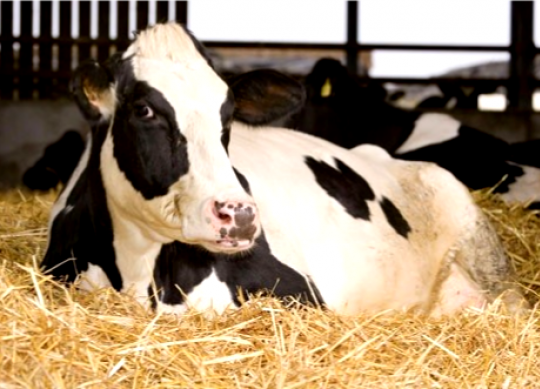Mitigating Heat Stress in Dry Cows
Warmer weather is on the horizon, and the increase in environmental temperature seriously impacts animal productivity. Data has revealed that heat stress not only affects current lactation of dairy cows but also suppresses future milk production when dairy cows experience it during the dry period or in utero. For example, it is estimated that a U.S. dairy cow can lose approximately 640 pounds of milk in the subsequent lactation if not cooled during the dry period.
Heat stress occurs when THI, an index calculated based on ambient temperature and relative humidity, is above 68. Cows experiencing heat stress can be easily detected on the farm, and characteristic signs of heat stress are:
- Increased respiration rate (> 60 breaths per min)
- Increase body temperature (> 102.2°F)
A summary of 10 trials conducted during summer months in multiple US states between the years of 1988 and 2017 revealed that cows heat-stressed during the dry period averaged 7.7 lb/d less milk than their cooled herd mates. The suppressed milk production experienced by heat-stressed dry cows lasted for the entire length of the subsequent lactation (Figure 1). Also, there is a strong negative correlation between afternoon core body temperature of dry cows and their subsequent lactation performance (Figure 2); each 0.5 °F increase in rectal temperature above the cow’s normal temperature, about 101.3 °F, equated to 7 lb/d drop in milk yield.
In three different experiments, researchers at the University of Arizona reported that cooled dry cows had improved subsequent reproductive performance compared to their heat-stressed counterparts:
- Substantial heat stress decreased services per conception from 3.68 to 3.09
- Substantial heat abatement (fans and soakers) reduced cows culled due to reproductive issues from 19.0 to 7.7%
Investments made in heat abatement equipment for dry cow housing can support huge long-term returns. Incorporating a proven feed additive in the summer dry cow ration to maintain hydration can further ensure success when it does not contribute to increasing DCAD balance of the diet (i.e., additional sodium or potassium).
Learn more about the effects of heat stress during the dry period and its effect on their offspring in the research.
By Provimi Animal Nutrition



